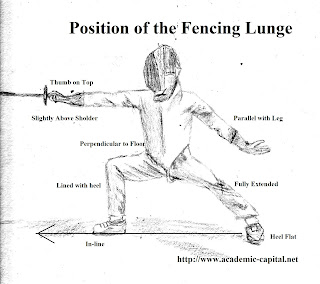Basic footwork is one of the most critical and fundamental
factors in becoming a strong fencer. Without the ability to hold your body in the
right posture, move forward and backwards, or adjust to your opponents
movements your fencing ability is going to be limited. The footwork is a basic
building block in the triangle of footwork, sword play, and mental
conditioning.
Footwork: The
movement of the body back and forth. Leads to lunges, attacks, and defense.
Sword play: The
ability to move your arm and swords in coordination with your footwork. The
more agile your wrists and quick your arms the more likely you can create
movements that attack and defend.
Mental Conditioning:
The ability to attack in defend is based on the recognition of movements and
having a battery of responses. The time it takes to condition the mind to
integrate recognition and reaction will determine the natural skill that leads
to pinpointed actions.
Professional fencers go back and review their footwork on a
regular basis as this is the very foundation of their sport. New fencers hate spending time in this boring
occupation of going back and forth but it is necessary to integrate the
movements so they are automatic. Some instructors may allow for some swordplay
to reduce the boredom. The goal is to integrate all of the actions together to
create relaxed, fluid, and well thought out movements.


